17 April 2020
Keeping their stories alive for the next generation
At the Commonwealth War Graves Commission, we have a team of Public Engagement Coordinators who are tasked with going out into communities to help people learn about the work of the Commission and the history in the cemeteries and churchyards near them. Here, Public Engagement Coordinator for the North, Elizabeth Smith, writes about her experiences educating and inspiring children with the stories of the men and women lost during the two world wars.

On a crisp autumnal morning, 90 children move in caterpillar fashion through the municipal section of Harrogate’s Stonefall Cemetery. The excitement in the air is tangible, undimmed even after an hour’s walk to get here. ‘Are we going to see Freddie Mercury’s grave?’ asks one youngster. ‘I love Freddie.’
The plot of over 900 war graves is hidden from view until we step out from behind the hedge and the children automatically fall silent. With solemn faces their eyes sweep across the uniform rows of headstones. The dropping jaws revealing the children’s thoughts.
 I had visited the children at their school earlier in the week and given an assembly about the work of the Commission. They had seen images of headstones, the Cross of Sacrifice, the Stone of Remembrance and even some of the casualties. Nothing though, could prepare them fully for the impact of seeing so many headstones.
I had visited the children at their school earlier in the week and given an assembly about the work of the Commission. They had seen images of headstones, the Cross of Sacrifice, the Stone of Remembrance and even some of the casualties. Nothing though, could prepare them fully for the impact of seeing so many headstones.
The children rotate through three activities: a trail through the cemetery, headstone rubbings and a talk from me about four of the casualties. The purpose of the activities is to engage the children with the importance of remembrance and help them appreciate the sacrifice made by the casualties. In completing the trail, the children learn about the layout of the headstones, read the headstones carefully and work independently.
The headstone rubbings take place along a row of 20 graves of airmen who died on the same evening in different accidents. There are photos of most of these casualties and on the reverse, details of the accident which led to their death. For those casualties without a photo there is a simple silhouette. I notice a child crouched on the floor staring silently at a silhouette. I approach her to ask if she’s ok, and I get the response; ‘Yes, I am just imagining what he might have looked like.’
When I tell the stories of the individuals buried, it has a big impact on the children. Four of these stories I tell are accompanied by photos: that of Fiji’s only pilot to fly with the RAF, the two Canadian brothers who died only months apart and the New Zealander whose parents wrote desperate letters, which lie in our archives, asking for their son’s body to be returned. Wet eyes from the children and staff show that the enormity of the sacrifice of these servicemen has hit home.
“I’m just imagining what he might have looked like”
Sometimes during a visit, the children have time to write in the Visitors’ Book. Their comments make interesting reading. They vary from those writing directly to the casualties, ‘Thank you for risking your lives.’ To comments on a poignant personal inscription, ‘I love the grave that says loved in life, missed in death.’ Some express thanks for the work of the CWGC: ‘This is such an amazing place, thank you for holding such tragic memories.’
Before they leave the site, the children take part in a Remembrance Service, usually designed by themselves. They stand in silence around the Stone of Remembrance their demeanour showing the impact the visit has made. They lay their wreath with a poem attached which they have written. In it they say, ‘You were brave, so for this we will not forget you.’ Come next November, and perhaps all the Novembers after that, I am sure they will cast their minds back to their visit to Stonefall and remember the sacrifice made by so many across the Commonwealth.



